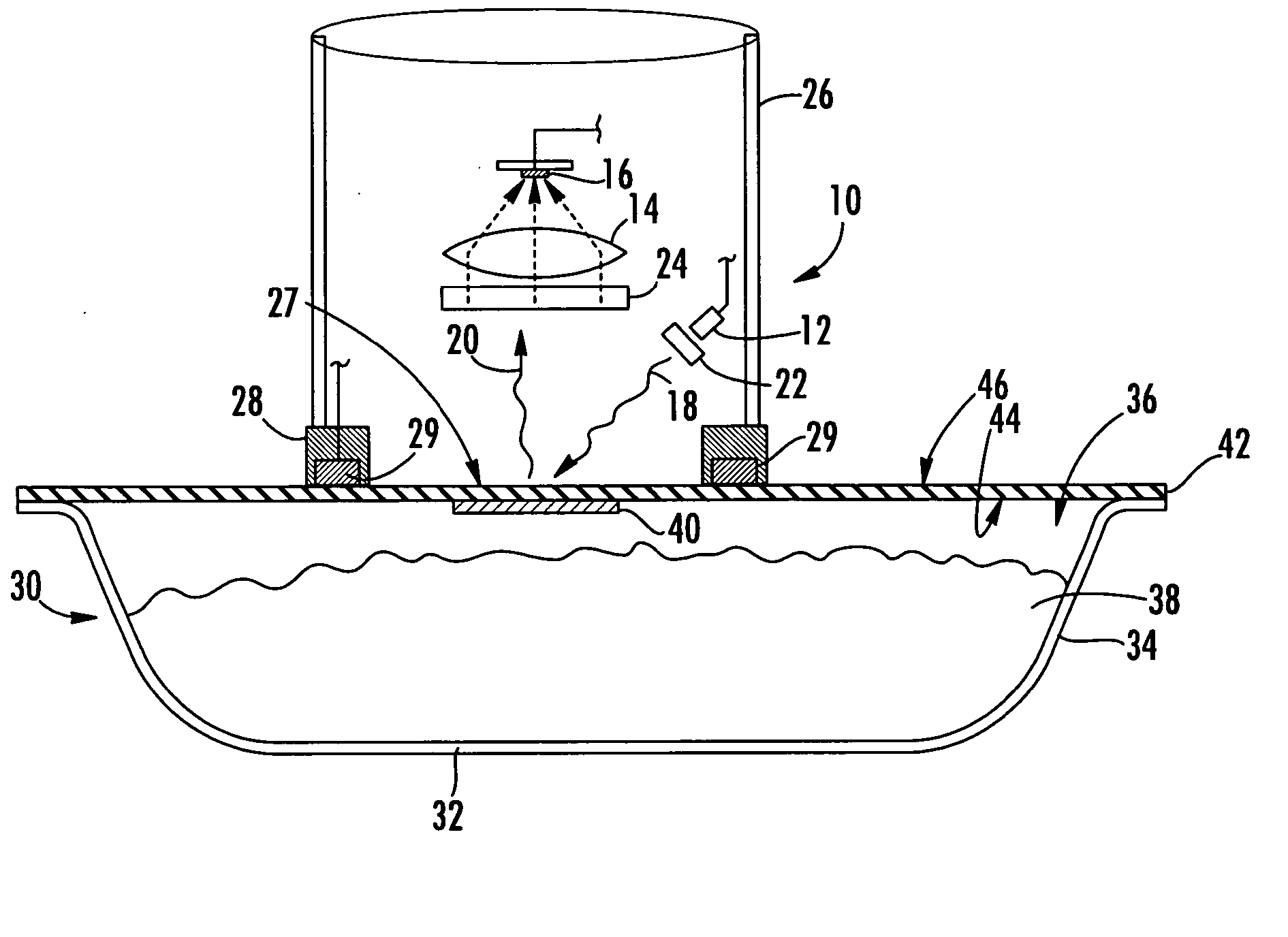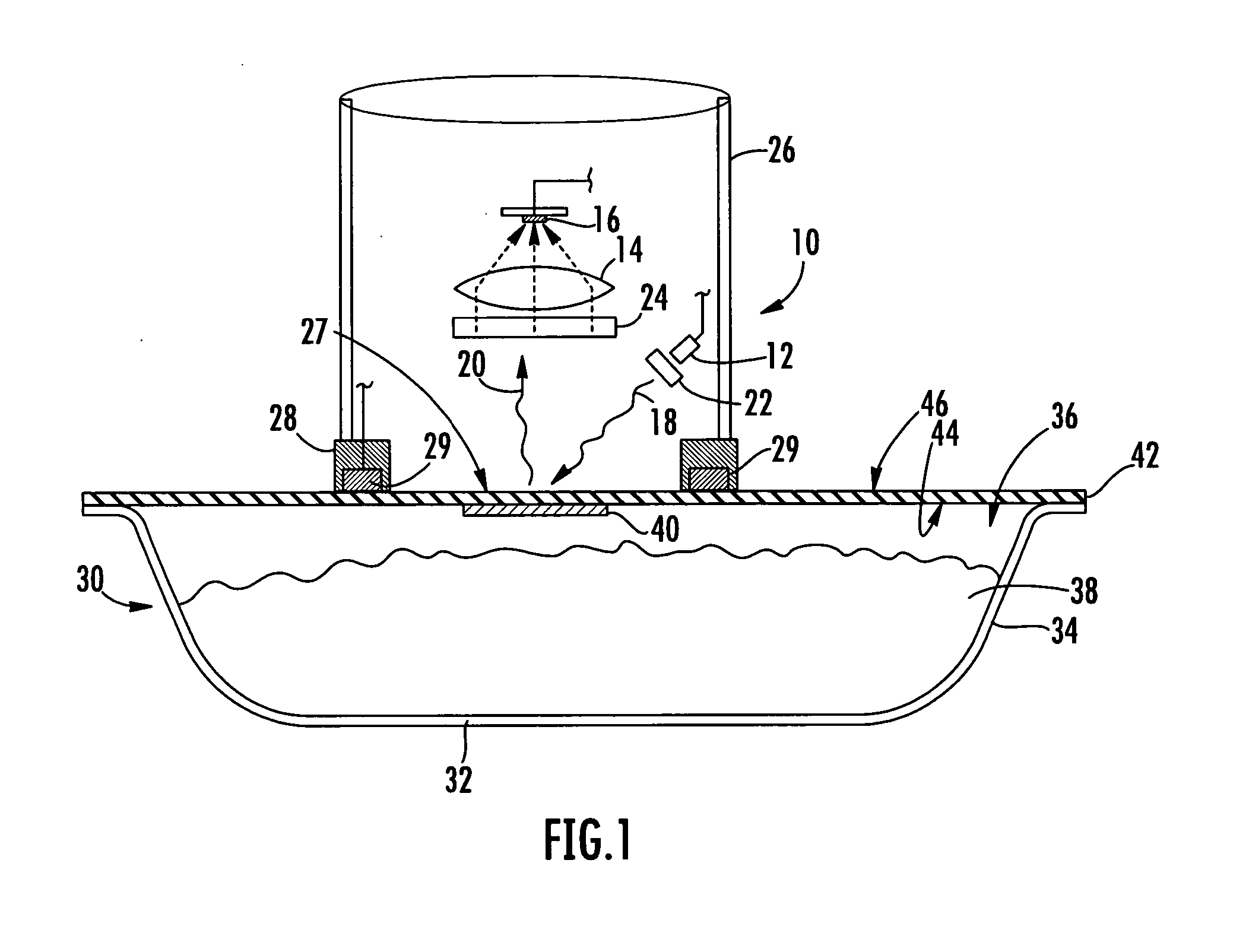Non-invasive method of determining oxygen concentration in a sealed package
a technology of oxygen concentration and sealed packaging, which is applied in the direction of fluid tightness measurement, chemical indicator analysis, instruments, etc., can solve the problems of oxygen scavengers not always activating on command, affecting the quality of products, and affecting the accuracy of oxygen concentration calculations, so as to improve the accuracy of temperature measurement, improve the quality of products, and improve the accuracy of oxygen concentration calculation
- Summary
- Abstract
- Description
- Claims
- Application Information
AI Technical Summary
Benefits of technology
Problems solved by technology
Method used
Image
Examples
Embodiment Construction
[0029] The present inventions now will be described more fully hereinafter with reference to the accompanying drawings, in which some, but not all embodiments of the inventions are shown. Indeed, these inventions may be embodied in many different forms and should not be construed as limited to the embodiments set forth herein; rather, these embodiments are provided so that this disclosure will satisfy applicable legal requirements. Like numbers refer to like elements throughout.
[0030] In one embodiment, the invention is directed to a method for measuring oxygen concentration within a sealed package. A method of measuring the oxygen concentration within the sealed package may include exciting a luminescent compound that is disposed in an interior of the package and then measuring the resulting luminescent intensity as a function of time. The intensity of the luminescent emission is inversely proportional to the oxygen concentration within the sealed package. The luminescent intensit...
PUM
| Property | Measurement | Unit |
|---|---|---|
| temperature | aaaaa | aaaaa |
| vol. % | aaaaa | aaaaa |
| temperature | aaaaa | aaaaa |
Abstract
Description
Claims
Application Information
 Login to View More
Login to View More - R&D
- Intellectual Property
- Life Sciences
- Materials
- Tech Scout
- Unparalleled Data Quality
- Higher Quality Content
- 60% Fewer Hallucinations
Browse by: Latest US Patents, China's latest patents, Technical Efficacy Thesaurus, Application Domain, Technology Topic, Popular Technical Reports.
© 2025 PatSnap. All rights reserved.Legal|Privacy policy|Modern Slavery Act Transparency Statement|Sitemap|About US| Contact US: help@patsnap.com



